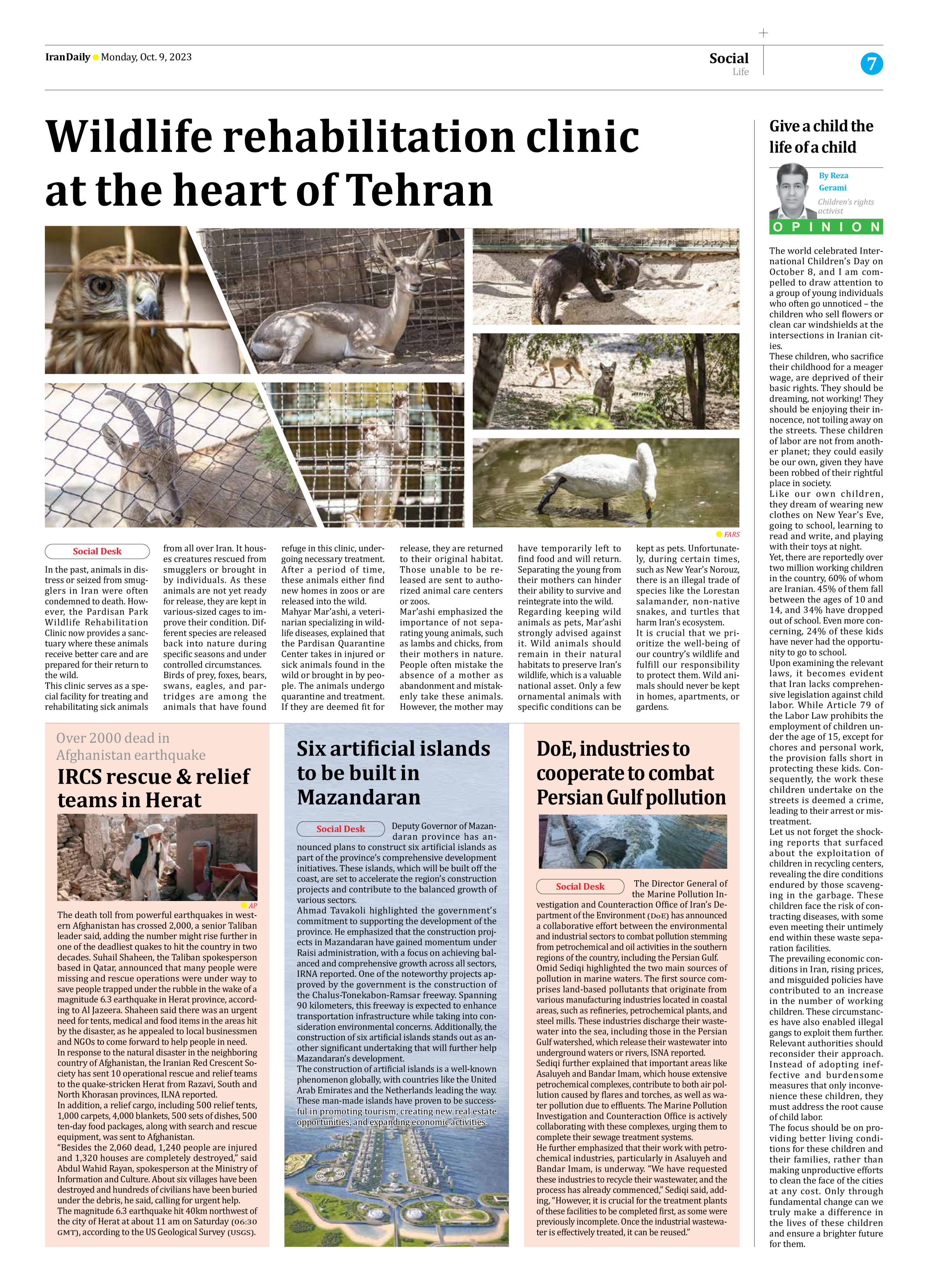
Give a child the life of a child
By Reza Gerami
Children’s rights activist
The world celebrated International Children’s Day on October 8, and I am compelled to draw attention to a group of young individuals who often go unnoticed – the children who sell flowers or clean car windshields at the intersections in Iranian cities.
These children, who sacrifice their childhood for a meager wage, are deprived of their basic rights. They should be dreaming, not working! They should be enjoying their innocence, not toiling away on the streets. These children of labor are not from another planet; they could easily be our own, given they have been robbed of their rightful place in society.
Like our own children, they dream of wearing new clothes on New Year’s Eve, going to school, learning to read and write, and playing with their toys at night.
Yet, there are reportedly over two million working children in the country, 60% of whom are Iranian. 45% of them fall between the ages of 10 and 14, and 34% have dropped out of school. Even more concerning, 24% of these kids have never had the opportunity to go to school.
Upon examining the relevant laws, it becomes evident that Iran lacks comprehensive legislation against child labor. While Article 79 of the Labor Law prohibits the employment of children under the age of 15, except for chores and personal work, the provision falls short in protecting these kids. Consequently, the work these children undertake on the streets is deemed a crime, leading to their arrest or mistreatment.
Let us not forget the shocking reports that surfaced about the exploitation of children in recycling centers, revealing the dire conditions endured by those scavenging in the garbage. These children face the risk of contracting diseases, with some even meeting their untimely end within these waste separation facilities.
The prevailing economic conditions in Iran, rising prices, and misguided policies have contributed to an increase in the number of working children. These circumstances have also enabled illegal gangs to exploit them further.
Relevant authorities should reconsider their approach. Instead of adopting ineffective and burdensome measures that only inconvenience these children, they must address the root cause of child labor.
The focus should be on providing better living conditions for these children and their families, rather than making unproductive efforts to clean the face of the cities at any cost. Only through fundamental change can we truly make a difference in the lives of these children and ensure a brighter future for them.







